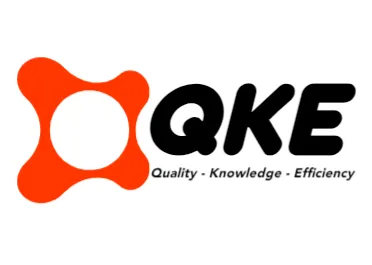Implementing a track and trace system for a business boosts supply chain visibility and efficiency through unique identification methods like barcodes or RFID tags. It enables real-time monitoring of goods from production to delivery, integrating seamlessly with ERP systems for accurate data flow. Strategic steps include defining objectives, selecting apt technology, and mapping processes. Challenges like integration complexity must be addressed. Exploring further unveils deeper insights into tailored applications and overcoming deployment hurdles.
Key Takeaways
- Define clear goals for your track and trace system, addressing specific needs like compliance or efficiency.
- Evaluate existing systems to identify gaps and ensure compatibility with ERP or other platforms.
- Choose suitable technology, such as barcodes or RFID, based on your business requirements.
- Map supply chain processes to determine critical data capture points for effective tracking.
- Train staff and integrate systems with pilot testing for smooth implementation and adoption.
Understanding the Basics of Track and Trace Systems
A track and trace system serves as a critical framework for businesses to monitor and manage the lifecycle of products, shipments, and assets across the supply chain. This sophisticated mechanism ensures visibility by tracking current locations and tracing past movements of items, from raw materials to finished goods. It relies on strategic components like Unique Identification, where barcodes, RFID tags, or serial codes are assigned to each item for precise recognition.
Central to its operation is Data Capture, facilitated by technologies such as scanners, GPS, and IoT sensors, which collect critical information at every stage—production, transit, and delivery. This data is transmitted to centralized databases or cloud platforms, enabling a detailed historical record of each item’s journey. By integrating with systems like ERP and WMS, the setup supports seamless data flow and operational efficiency, providing stakeholders with actionable insights through structured dashboards and real-time updates. Additionally, such systems enhance customer satisfaction by offering real-time shipment updates to keep clients informed throughout the delivery process.
Key Benefits of Adopting Track and Trace Technology

Implementing track and trace technology offers businesses a transformative edge in navigating the complexities of modern supply chains. This innovative approach delivers a profound Visibility Impact by providing real-time, end-to-end insights into goods’ location and condition, addressing a critical challenge for 84% of supply chain officers. It enables swift identification of delays or issues, ensuring proactive solutions.
Moreover, the Efficiency Gains are substantial, streamlining operations through bottleneck identification and automation, reducing manual errors, and optimizing routes. Companies leveraging this achieve 3% higher profit margins, per Aberdeen Group.
Key advantages include:
- Enhanced Customer Trust: Real-time updates build transparency with accurate delivery estimates.
- Superior Inventory Control: Precise stock data minimizes manual checks and loss.
- Robust Security: Detailed tracking mitigates risks like theft or counterfeiting.
Strategically, track and trace fortifies supply chain resilience, elevates customer satisfaction, and drives operational excellence through informed decision-making.
Essential Steps to Implement a Track and Trace Solution

Businesses seeking to harness the advantages of track and trace technology must approach the implementation process with meticulous planning and strategic foresight. The first step involves defining clear objectives, identifying specific issues like compliance or efficiency, and determining the scope of tracking across products or materials. Assessing current systems for gaps is critical before selecting technology—whether barcodes, RFID, or blockchain—for scalability and integration with existing platforms like ERP.
Next, Process Mapping becomes essential to chart supply chain flows and pinpoint critical data capture stages, ensuring accurate serialization and hardware setup. Following this, system integration requires installing components and conducting pilot tests to verify data precision. Finally, a structured rollout necessitates Staff Training to equip teams with skills for new procedures and system use. Continuous monitoring and optimization against initial goals ensure the solution delivers strategic value across operations.
Overcoming Common Challenges in System Deployment

How can organizations navigate the intricate landscape of deploying a track and trace system without stumbling over prevalent obstacles? Deploying such systems often involves tackling integration complexity, cost barriers, and data security. A strategic approach requires prioritizing robust Data Protection to safeguard sensitive information against cyber threats and ensure compliance with privacy regulations like GDPR. Simultaneously, addressing compatibility issues through Interoperability Fixes is vital to enable seamless data exchange across diverse stakeholders and systems, minimizing inefficiencies.
To mitigate challenges effectively, organizations can consider these actionable strategies:
- Invest in Scalable Solutions – Opt for modular systems that adapt to growth and prevent data silos.
- Prioritize Training – Equip staff with skills to reduce resistance and enhance system adoption.
- Leverage Expert Partnerships – Collaborate with tech providers for tailored integration and ongoing support.
Exploring Industry-Specific Applications and Use Cases

Why do track and trace systems hold such transformative potential across diverse industries? Their ability to enhance transparency, efficiency, and compliance strategically reshapes operations. In pharmaceuticals, they combat counterfeiting and ensure patient safety through precise batch tracing, aligning with strict regulations like the FDA’s DSCSA. The food and beverage sector benefits from farm-to-fork traceability, bolstering food safety and consumer trust during contamination crises. In automotive, component tracking ensures quality assurance and streamlines recalls, while logistics gains real-time supply chain visibility for optimized inventory control.
Beyond efficiency, these systems address Ethical Implications by preventing fraud and protecting public health, though they raise concerns over data privacy. Global Adaptations are critical, as industries must tailor solutions to varied regulatory landscapes and cultural norms, ensuring seamless integration. Strategically, track and trace systems are not just tools but catalysts for accountability and innovation across sectors, driving operational excellence worldwide.

 Tiếng Việt
Tiếng Việt 日本語
日本語 中文 (中国)
中文 (中国) 한국어
한국어
